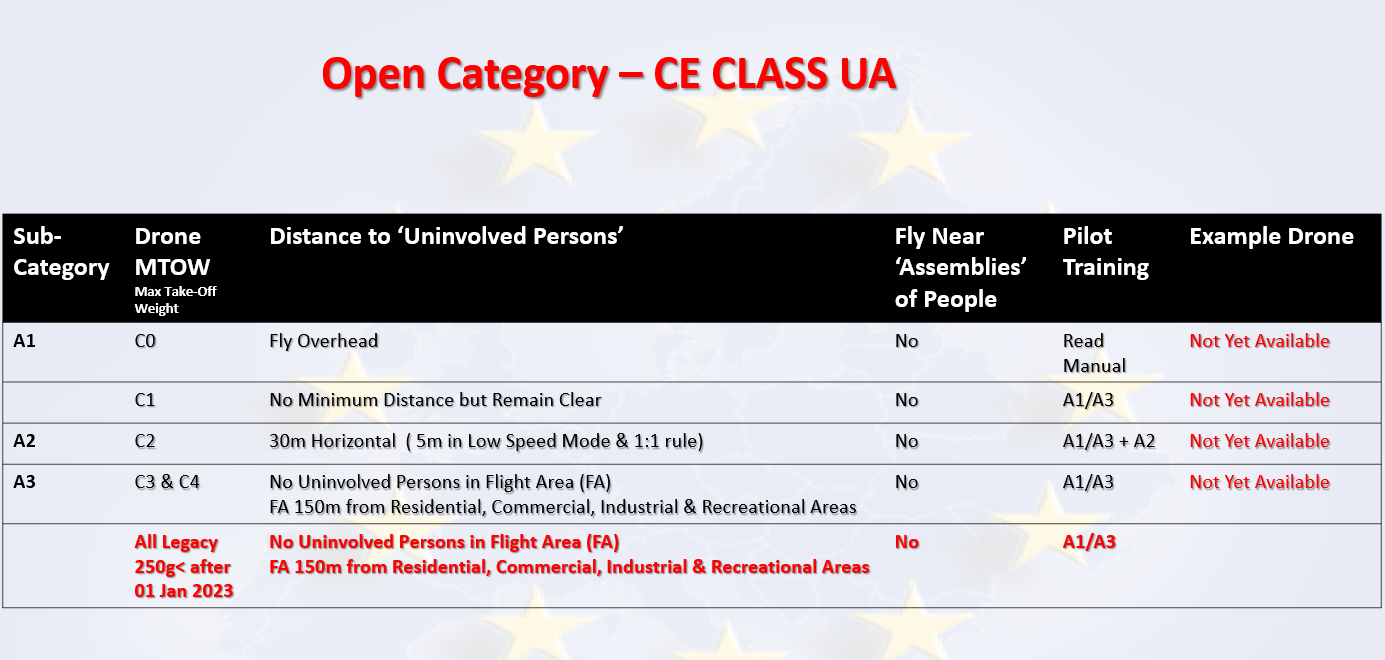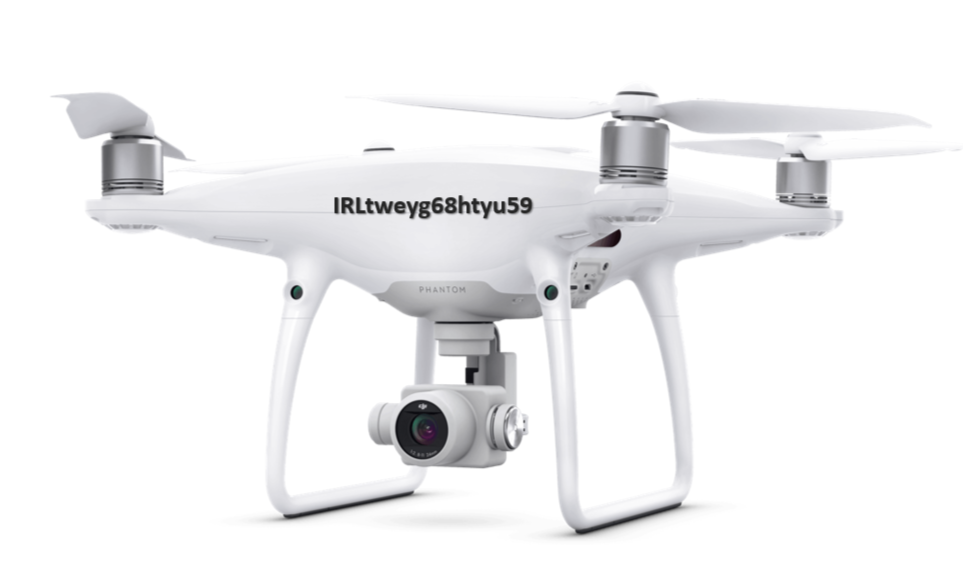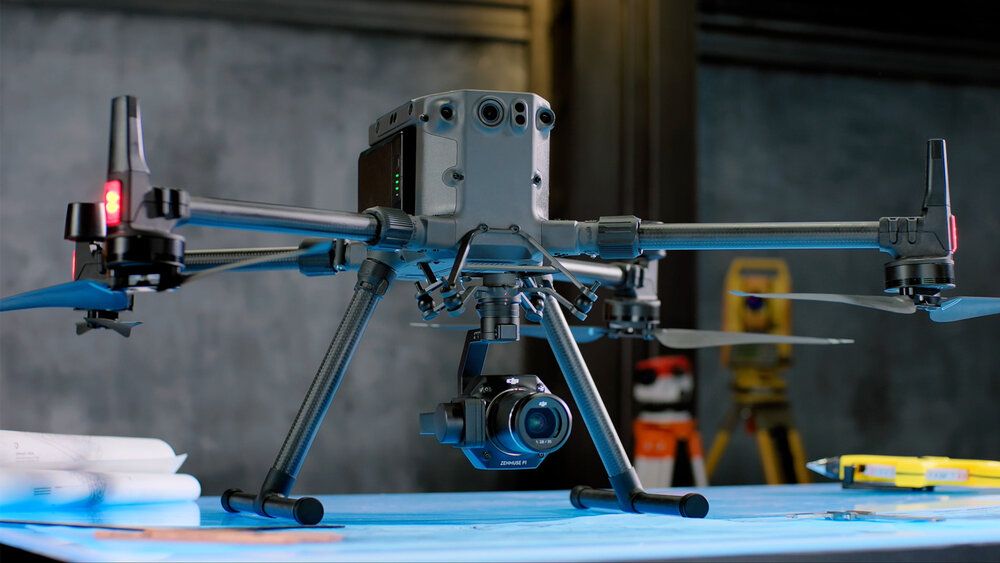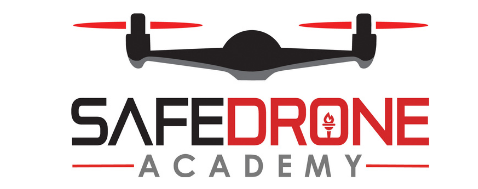The Open Category
Mark Prendergast
Drag to resize
New EU Drone Regulation
EU UAS regulation separates the use of unmanned aircraft into three (3) categories of operations, namely the Open, Specific and Certified categories. The Open category caters for operations, both recreational and commercial, that present low or no risk to third parties; be they on the ground or in the air.
UAS operations permitted under the Open category require no aviation authority ‘approval’. However, all Open category remote pilots must meet minimum competency standards achieved through some form of basic training.
Main Rules
The Open category considers both ‘air’ and ‘ground’ risk and has 6 major rules.
- Remote pilots must always maintain their unmanned aircraft in Visual Line of Sight (VLOS). (Air & Ground Risk).
- Remote pilots must keep their unmanned aircraft within 120m (400ft) of the closest point of the earth's surface. (Air Risk).
- Unmanned aircraft must have a Max Take-Off Weight (MTOW) no greater than 25kg (drone, camera, battery, accessories, payload). Additionally, there are specific limitations on the MTOW for different sub-categories with the Open category(Ground Risk).
- Remote pilots must remain outside 'geographic zones' where Open category operations are prohibited or restricted. (Air & Ground Risk).
- No payload should be dropped from Open category unmanned aircraft and no ‘dangerous goods’ (ICAO defined) should be carried. (Ground Risk).
- Depending on the weight or C marking of the unmanned aircraft used, a minimum horizontal distance from ‘Uninvolved Persons’ must be maintained. Additionally, Open category remote pilots must never fly their unmanned aircraft over ‘Assemblies of People'. (Ground Risk).
Horizontal Distance Rules.
Open A1: Fly beside people.
Open A2: Fly close to people. (50m horizontal safety distance from people not involved in the drone operation. 30m if using a C Marked aircraft). Open A2 pilot certificate required.
Open A3: Flying area 150m from Residential, Commercial, Industrial & Recreational areas. No uninvolved persons within the flying area.
In all categories, never fly close to or over 'assemblies of people'.
‘Legacy’ and ‘CE’ Certified Unmanned Aircraft
EU Regulation (Regulation (EU) 2019/945) provides for a new standard of unmanned aircraft design and manufacturing. Unmanned aircraft designed and manufactured to the new standard will have a ‘Conformité Européenne’ (CE) stamp affixed to them. The Open category allows for five (5) CE marked drone classes, namely Class C0 – C4. Depending on the C marking of unmanned aircraft used, remote pilots may fly in the different subcategories; Open A1 (C0 & C1), Open A2 (C2) or Open A3 (C3 & C4). Currently, no C Marked unmanned aircraft are available on the market.
Unmanned aircraft available today and which are not designed to Regulation (EU) 2019/945 requirements, and so have no CE class markings, are referred to as ‘legacy’ unmanned aircraft. These are the DJI, Yuneec, Autel, Walkera and other unmanned aircraft remote pilots currently utilise. Articles 4, 20 and 22 of Regulation (EU) 2019/947 outline how 'legacy' aircraft may operate in the Open category. These articles place much greater flight restrictions on 'legacy' unmanned aircraft when compared to operating C marked aircraft in the Open category.
Sub-Categories
Depending on the C marking/‘Legacy’ unmanned aircraft a remote pilot is flying, and the level of competency they have achieved, they may fly within the limitation of one of the three (3) sub-categories the Open category provides for. The three sub-categories are referred to as Open A1, Open A2 and Open A3. The separate categories identify the minimum horizontal distance an unmanned aircraft may be flown from 'uninvolved persons' and the remote pilot competency required. UAS operators and remote pilots should note that ‘legacy’ unmanned aircraft with a max take-off weight (MTOW) of 250g or greater are restricted to the Open A3 sub-category after 01 Jan 2024.
See the following tables below for more specific information on the sub-categories as they apply to 'legacy' drones (Image 1) and C Marked drones (Image 2).
See the following tables below for more specific information on the sub-categories as they apply to 'legacy' drones (Image 1) and C Marked drones (Image 2).

Image 1
Legacy' unmanned aircraft in the Open category:
At Safe Drone Academy we refer to this as the Restricted Open Category and its period of operation spans the 01 Jan 2021 to 01 Jan 2024 timeline. Operators and Remote Pilots with todays unmanned aircraft should refer to this table for guidance.
Note 1. To fly in the Open A2 Sub-Category remote pilots require a 500g - 2kg 'legacy' unmanned aircraft (DJI Air, Mavic/Phantom etc) and must additionally complete Open A2 category training with Safe Drone Academy.
Note 2. After 01 Jan 2024, all legacy unmanned aircraft with Max Take-Off Weights (MTOW) between 250g and less than 25kgs, are restricted to the A3 subcategory only. This is a major restriction. You will need to operate in the Specific Category to get around this restriction.
Legacy' unmanned aircraft in the Open category:
At Safe Drone Academy we refer to this as the Restricted Open Category and its period of operation spans the 01 Jan 2021 to 01 Jan 2024 timeline. Operators and Remote Pilots with todays unmanned aircraft should refer to this table for guidance.
Note 1. To fly in the Open A2 Sub-Category remote pilots require a 500g - 2kg 'legacy' unmanned aircraft (DJI Air, Mavic/Phantom etc) and must additionally complete Open A2 category training with Safe Drone Academy.
Note 2. After 01 Jan 2024, all legacy unmanned aircraft with Max Take-Off Weights (MTOW) between 250g and less than 25kgs, are restricted to the A3 subcategory only. This is a major restriction. You will need to operate in the Specific Category to get around this restriction.

Image 2
C marked drones in the Open Category.
Note. To fly in the A2 Sub-Category you need a C2 Class drone and Open A2 category training is required. If Open A2 training is not conducted, C2 drones are limited to the Open A3 subcategory.
C marked drones in the Open Category.
Note. To fly in the A2 Sub-Category you need a C2 Class drone and Open A2 category training is required. If Open A2 training is not conducted, C2 drones are limited to the Open A3 subcategory.
Training
The EU UAS regulation requires that almost every remote pilot, recreational and commercial, receive some form of training. This requirement is in response to the continued occurrence of remote pilots flying beyond regulatory requirements due to a lack of understanding of the rules. By requiring a minimum ‘foundation’ training standard, it is hoped to improve awareness and prevent some of this illegal flying.
Those wishing to fly in the more advanced Open A2 category (heavier aircraft flying closer to uninvolved persons), need to complete both the Open A1/A3 POOT course and an additional Open A2 Certificate of Competency course provided by Declared UAS Training Organisations (DUTO) (drone schools) such as Safe Drone Academy (www.safedrone.ie). These courses may be provided online. The drone school will then confirm to the aviation authority (IAA) that Open A2 competence has been met and the remote pilot applicant can apply for their Open A2 ‘Certificate of Competence’. This certificate is also valid for five (5) years and in every EU member state. See Safe Drone Academy's Open A2 Course.
To fly in either subcategory A1 or A3, a remote pilot must complete the UAS 'foundation' competency course, referred to as Open A1/A3 Proof Of Online Training (POOT) course. The Open A1/A3 POOT course provides basic guidance on UAS regulations and operations and requires successful completion of an online 40 multiple choice question exam. Successful completion of this course rewards the remote pilot with their Open A1/A3 Proof Of Online Training competency certificate. The remote pilot may now fly using either Open A1 or Open A3 rules depending on the Maximum Take-Off Weight (MTOW) of the unmanned aircraft they are using. This certificate is valid for five (5) years and in every EU member state. Open A1 & A3 training is normally provided by an aviation authority.
Those wishing to fly in the more advanced Open A2 category (heavier aircraft flying closer to uninvolved persons), need to complete both the Open A1/A3 POOT course and an additional Open A2 Certificate of Competency course provided by Declared UAS Training Organisations (DUTO) (drone schools) such as Safe Drone Academy (www.safedrone.ie). These courses may be provided online. The drone school will then confirm to the aviation authority (IAA) that Open A2 competence has been met and the remote pilot applicant can apply for their Open A2 ‘Certificate of Competence’. This certificate is also valid for five (5) years and in every EU member state. See Safe Drone Academy's Open A2 Course.
Registration
Registration has been a feature of unmanned aviation in Ireland since 2015. However, the registration process under EU regulation is significantly different and so Irish UAS operators will need to re-register under the new system.
Under EU regulation, the UAS operator is required to register. A UAS Operator is "any legal or natural person operating or intending to operate one or more UAS". Essentially, if any natural person or legal business operates an unmanned aircraft the law considers them an UAS operator and they must register their operations with an aviation authority. See UAS Operator Registration Guide.
Once an entity registers, they must affix their Operator ID (16 character registration number) to every unmanned aircraft they operate. The same number is placed on each unmanned aircraft. This is different from the old Irish system where each individual unmanned aircraft had its own registration number. The Operator ID must be clearly visible and readable when the unmanned aircraft is on the ground. It is permissible to convert the Operator ID to a QR code and/or place the Operator ID label in a battery compartment.
Note. Unlike under the Irish registration system, the IAA will not issue a registration decal to affix to your unmanned aircraft.
Direct Remote ID also forms a major part of the registration system. Direct Remote ID requires each unmanned aircraft broadcasts their Operator ID in addition to broadcasting the current location of the unmanned aircraft, its height, speed, unique serial number and importantly, the location of the remote pilot. Remote ID is a major security, safety and enforcement component of the EU UAS regulations and is a major component of the EU's wider U-Space (unmanned airspace) project. For data protection reasons, only limited details can be received by members of the public but police and other enforcement agencies will have access to the full broadcast information. Direct Remote ID is a essential feature on some of new C marked drones. Direct Remote ID is not expected to be required until 2024.
Under EU regulation, the UAS operator is required to register. A UAS Operator is "any legal or natural person operating or intending to operate one or more UAS". Essentially, if any natural person or legal business operates an unmanned aircraft the law considers them an UAS operator and they must register their operations with an aviation authority. See UAS Operator Registration Guide.
Once an entity registers, they must affix their Operator ID (16 character registration number) to every unmanned aircraft they operate. The same number is placed on each unmanned aircraft. This is different from the old Irish system where each individual unmanned aircraft had its own registration number. The Operator ID must be clearly visible and readable when the unmanned aircraft is on the ground. It is permissible to convert the Operator ID to a QR code and/or place the Operator ID label in a battery compartment.
Note. Unlike under the Irish registration system, the IAA will not issue a registration decal to affix to your unmanned aircraft.
Direct Remote ID also forms a major part of the registration system. Direct Remote ID requires each unmanned aircraft broadcasts their Operator ID in addition to broadcasting the current location of the unmanned aircraft, its height, speed, unique serial number and importantly, the location of the remote pilot. Remote ID is a major security, safety and enforcement component of the EU UAS regulations and is a major component of the EU's wider U-Space (unmanned airspace) project. For data protection reasons, only limited details can be received by members of the public but police and other enforcement agencies will have access to the full broadcast information. Direct Remote ID is a essential feature on some of new C marked drones. Direct Remote ID is not expected to be required until 2024.

Example of an UAS Operator ID on a Phantom 4 drone.
Geographic Zones
EU Member States are required to define areas where unmanned aircraft flying is "prohibited, restricted or allowed". Among other reasons, Member States should consider safety, security, privacy or environmental reasons when deciding on geographic zones. By regulation, these geographic zones should be made available in digital format by 01 Jan 2022. Subsequently, drone manufacturers should be able to produce very accurate maps of flying and non-flying areas; geo-fencing areas that are out of bounds to unmanned aircraft.
Until this date and in line with current requirements, Open category operations in Ireland are to remain clear of many areas such as, ATC controlled airspace, prisons, hospitals with helicopter landing pads, helicopter refueling pads, Athlone town military barracks, the Curragh military camp, Cathal Brugha barracks, military weapons ranges when active and military airspace. The Phoenix Park is also an area that is prohibited to fly in. Additionally, remote pilots are required to avoid flying over national monuments and many national parks and wildlife sanctuaries. Safe Drone Academy's handy airspace-map provides guidance on ATC airspace areas and some other areas to be avoided. Click on the map to view the live version.
Data Protection
As a consequence of the high resolution camera and other sensors carried on many drones, EU UAS regulation requires UAS operators and remote pilots are mindful of data protection and privacy regulation. A photo, video or sound recording of a natural person is considered personal data. Data protection is a complex area but in general, never capture imagery, sound or other data of a natural person without their permission and never capture imagery of people in their private residence.
In public areas, make sure you have a ‘legal basis’ for capturing and publishing data if doing so for commercial reasons. 'Legal basis' includes reasons such as consent or contract, public task or vital interest and/or legitimate interest. You become an official 'data controller' in these cases with regulatory obligations.
Capturing data in public areas is also possible if it is for personal use only, and is permitted under the 'household exemption' rule. Always be sensible though, if you publish something online and are asked to take it down, then it is probably wise to do so.
In general, before you hit record, do a quick Data Assessment to ensure you are not about to capture illegal data or you are capturing the minimal amount of data you require.
In public areas, make sure you have a ‘legal basis’ for capturing and publishing data if doing so for commercial reasons. 'Legal basis' includes reasons such as consent or contract, public task or vital interest and/or legitimate interest. You become an official 'data controller' in these cases with regulatory obligations.
Capturing data in public areas is also possible if it is for personal use only, and is permitted under the 'household exemption' rule. Always be sensible though, if you publish something online and are asked to take it down, then it is probably wise to do so.
In general, before you hit record, do a quick Data Assessment to ensure you are not about to capture illegal data or you are capturing the minimal amount of data you require.
Insurance
EU UAS regulation does not specifically require UAS operators to acquire public liability insurance. This requirement falls under the remit of individual member states or is already covered by the EU’s Regulation (EC) 785/2004. This regulation requires all unmanned aircraft be insured for third party risks unless they weight less than 20kg and are used for recreational purposes only.
The Open category will cater for many recreational pilots and so in compliance with the EC regulation, there is mostly is no requirement to have insurance. However, if you conduct commercial operations in the Open category Regulation 785/2004 requires you obtain a minimum public liability insurance policy.
Specific Category
If UAS operators or remote pilots find the restrictions of the Open category too limiting for their requirements, the Specific Category allows more flexibility. UAS operators will find the Specific Category permits more freedom of operation with ‘legacy’ unmanned aircraft and unmanned aircraft weighing more than 25kgs, the ability to fly in controlled airspace and other geographic zones that are out of bounds to the Open category. It is also possible to conduct limited Beyond Visual Line of Sight (BVLOS) operations.
Specific Category operations require aviation authority approval, and in many pre-defined operational cases this process is very straight forward. To meet the increased risk profile of these operations, more competence in both the UAS Operator and remote pilot is demanded. These requirements are facilitated through more advanced operational procedures and training. Contact Safe Drone Academy (www.safedrone.ie) for more details.
Blue Skies and Safe landings.
Specific Category operations require aviation authority approval, and in many pre-defined operational cases this process is very straight forward. To meet the increased risk profile of these operations, more competence in both the UAS Operator and remote pilot is demanded. These requirements are facilitated through more advanced operational procedures and training. Contact Safe Drone Academy (www.safedrone.ie) for more details.
Blue Skies and Safe landings.
-
COMPANY
-
• Privacy Policy - UAS Operations
Sign Up & Receive Brochure
_______________________________________________________________________________________________________________________________________________________________

Thank you! Click HERE to Grab Your Free Guide.
